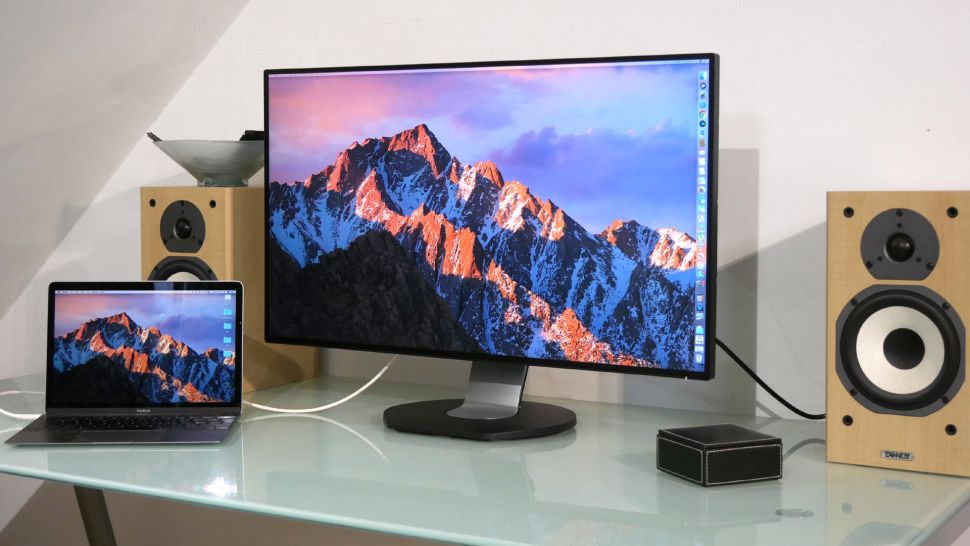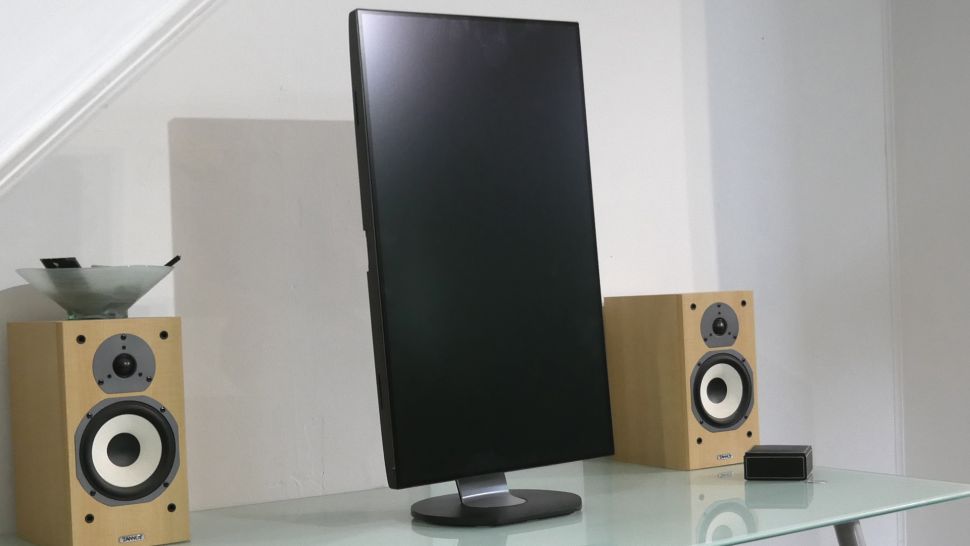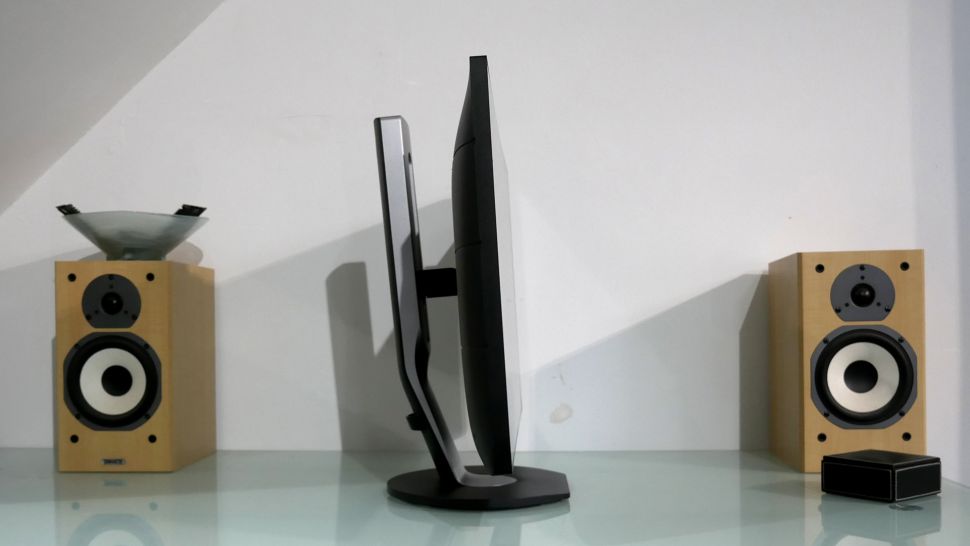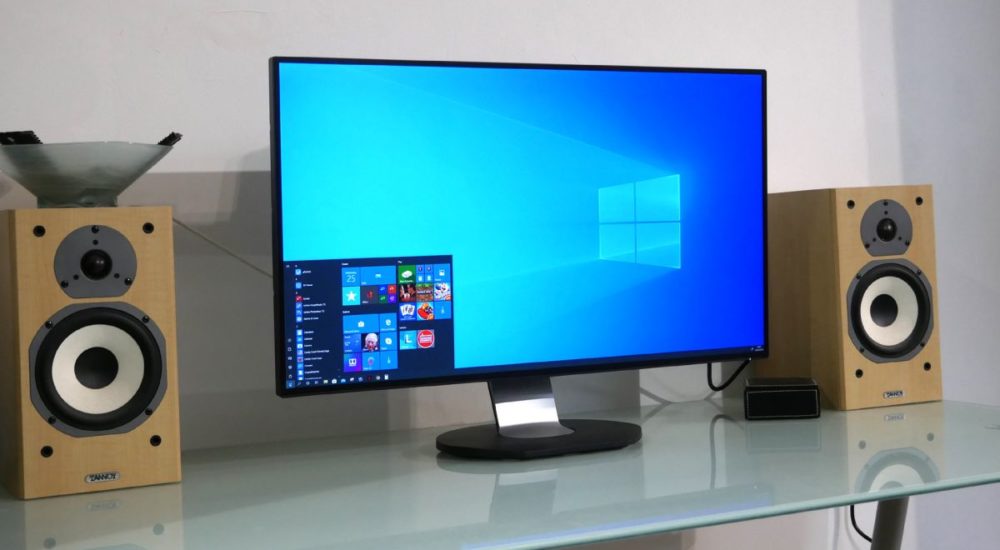OUR VERDICT
Philips’ latest 4K productivity panel features quality IPS visuals and excellent USB-C docking capabilities, albeit at a price
FOR
- Gorgeous 32-inch 4K IPS panel
- Excellent USB-C docking support
- Strong all-round productivity feature set
AGAINST
- No HDR support
- Relatively limited color coverage
In search of a high-quality, multi-purpose workhorse of a display? Then get a load of the new 32-inch, 4K Philips Brilliance 329P9H. It’s not the most advanced PC monitor on the market. It lacks several features that are currently in vogue, including HDR support and adaptive refresh. But it’s also packed with things that actually improve productivity.
Aside from the core proposition, which is a 32-inch 4K IPS panel, the 329P9H offers USB-C docking complete with charging support and ethernet connectivity. That allows everything from network access to keyboard and peripherals to be connected to this display, to which a laptop can then be hooked up via a single USB-C cable. On paper, then, this looks like a great screen for getting some serious work done. However, it also lacks a few features that content creation professionals might expect, especially given the elevated price point.

Price and availability
Coming in a little under $800, and likewise just below £700 in the UK, Philips is pitching the Brilliance 329P9H at a pretty lofty price point. That’s especially true given it lacks not only HDR support, but also wide-gamut color fidelity. For content creation professionals, those omissions could be problematic.
However, when present, those features tend to push the price even higher. Tick all those boxes and typical pricing rises above $1,000 / £1,000. For everyone else, the 329P9H counters with outstanding USB-C docking features.

Design and features
At the core of the Philips Brilliance 329P9H is a high quality 32-inch IPS LCD panel offering a full 4K resolution of 3,840 by 2,160 pixels. By some metrics, it offers the latest technology. Philips quotes 1,300:1 static contrast performance, which is a clear cut above the 1,000:1 IPS norm, for instance. 10-bit per channel color is also part of the feature mix.

However, in other regards, the on-paper image quality offered by the 329P9H is a little behind the curve. For starters, it’s bereft of HDR support, a fact reflected in the absence of a backlight with local dimming support and a relatively pedestrian peak brightness of 350cd/m2.

Philips also pegs the Brilliance 329P9H at 87 per cent coverage of Adobe RGB colour space. That’s a little less than we would normally expect from a monitor of this class and price. That Philips doesn’t provide a figure for the DCI-P3 space only adds to the impression that this monitor may not be a great choice for content creation specialists.
However, where it does score is for pure productivity. Partly that’s down to the generous desktop space that comes with the 4K resolution. But it’s also thanks to some very practical features. Top of the list is USB Type-C docking. For starters, Philips’ implementation includes 65 watts of charging power, which should be plenty for all but the most power hungry laptops.

There’s also a USB hub, enabling keyboard, mouse and more to be hooked up to this monitor and ready to go the moment you plug in via USB-C. A little more unusual is the ethernet port, which adds wired networking into the docking mix. All told, it’s a comprehensive docking solution.

Another highlight is the industrial design, with slim bezels, a contemporary look and a full range of stand adjustment including rotation intro portrait. Rounding out the main features is a pop-up 1080p webcam complete with a microphone and Windows Hello support. That’s handy, especially for those who prefer not to fall back to their portable PCs for that functionality when docked.
Of peripheral but occasional relevance, the Brilliance 329P9H’s power socket requires a C15 cable, which is supplied. A standard C13 cable, often known as a kettle cable, cannot be used. The C15 cable is rated for a higher 120 degrees C over the C13’s 65 degrees. It’s not clear why the 329P9H requires the higher temp cable, but it’s a detail worth noting in terms of long term implementation and support.

Performance
In this age of creeping HDR ubiquity, a mere SDR monitor like the Philips Brilliance 329P9H has its work cut out making an initial impression. But go in with the right expectations and this is mostly an impressive display.
The factory calibration is subjectively spot on, while test images including color scales and gradients reveal no visible flaws. The Brilliance 329P9H is vibrant, with strong color saturation, but also looks natural and controlled with convincing flesh tones. The viewing angles are likewise impeccable and contrast performance is particularly good for an IPS panel with a single static backlight (the backlight does offer a dynamic mode, but as a monolithic whole rather than courtesy of local dimming).

We’ve no complaints about the anti-glare coating, either, which is smooth and free from sparkle. Add in the 4K resolution and, overall, this is a very pleasing SDR display. At 32 inches, the 3,840 by 2,160 native resolution makes for a pixel density of 138 pixels per inch. Enough for somewhat sharper fonts than the circa 100DPI norm and plenty of detail. But this isn’t truly a high DPI display. To be worthy of that accolade, something nearer 200 DPI would be required.

On that note, while Apple Mac computers are supported, scaling below native resolution results in a relatively jagged and unsatisfactory appearance. Image quality at native is excellent, but the relatively modest DPI prevents macOS from performing at its best when scaling.
Beyond the default image settings, the 329P9H offers a wide range of color temps and per-channel color adjustments. However, the presets are somewhat limited. Philips has included a number of purpose-orientated presets, such as ‘Office’, ‘Photo’, ‘Movie’ and more, in terms of color spaces, only sRGB is included. The likes of Adobe RGB and DCI-P3 modes are notable by their absence.

That said, the USB-C docking does everything you would hope for. Once you’re accustomed to the ability to do everything via one cable – drive a display, connect peripherals and charge – you won’t want to go back to the usual rat’s nest of cables or the long term support and compatibility headaches that bespoke docking solutions come with.

Verdict
While the Philips Brilliance 329P9H looks expensive at first glance, a quick scan of the competition reveals that prices escalate rapidly at this end of the market. BenQ’s DesignVue PD3220U, for instance, looks similar in some regards, but costs several hundred more, whether you’re talking dollars or UK pounds.
Observe the spec sheets a little closer and you’ll find the BenQ offers tighter color control as required by its content creator remit, plus notional HDR support. That the Brilliance 329P9H is somewhat limited by comparison in terms of its support for industry standard color spaces, as indicated by its relatively pedestrian coverage of the Adobe RGB space, shouldn’t necessarily be held against it.
This isn’t meant to be a studio quality content creation panel. Instead, it’s an all-round productivity tool and in that role the Philips Brilliance 329P9H scores well. It’s a great looking panel, both in image quality and design terms, while features like USB-C docking with ethernet and a webcam with Windows Hello support make for a very comprehensive package. As a productivity tool, this monitor would be a worthwhile long term investment and a very enjoyable screen to use and live with, day-to-day.
Source: techradar.com




































